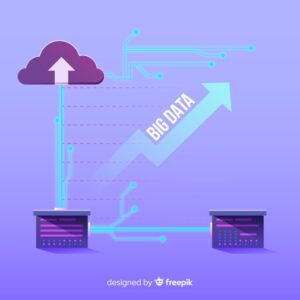The term “Loadcatvtonpipeline” refers to a specialized process or system designed to optimize data handling and processing in modern pipelines. In this article, we will delve into the intricacies of this concept, exploring its key components, benefits, challenges, and practical applications. By the end, you’ll have a comprehensive understanding of why Loadcatvtonpipeline is crucial in today’s technological landscape.
Understanding Loadcatvtonpipeline
At its core, Loadcatvtonpipeline encompasses the methodologies and tools used to efficiently load, categorize, validate, and transfer data through pipelines. This process is particularly relevant in industries where large volumes of data need to be managed seamlessly. Whether it’s in data engineering, content delivery networks, or logistics, the principles of Loadcatvtonpipeline ensure that information flows smoothly from one stage to another.
The process typically begins with loading raw data into the system. This stage requires robust input mechanisms capable of handling diverse data formats and sources. Once loaded, the data undergoes categorization, which involves classifying and organizing it based on predefined criteria. Validation follows to ensure data integrity and accuracy. Finally, the processed data is transferred to its destination, ready for analysis or application.
Key Components of Loadcatvtonpipeline
1. Data Loading Mechanisms
Data loading serves as the foundation of the Loadcatvtonpipeline process. It involves ingesting raw data from various sources, such as databases, APIs, or file systems. Effective data loading mechanisms are crucial for handling high volumes of information without bottlenecks. Tools like ETL (Extract, Transform, Load) pipelines are commonly used at this stage.
Efficient data loading requires addressing challenges like data format compatibility, scalability, and error handling. Advanced systems often incorporate automation to streamline this phase, enabling real-time or batch processing based on specific requirements.
2. Categorization Strategies
Once data is loaded, categorization ensures it is structured and easily accessible. This step involves defining metadata, tagging information, and grouping related datasets. Categorization is essential for enhancing searchability, enabling quick retrieval, and supporting downstream processes.
For example, in a logistics pipeline, categorization might involve sorting shipments by region, delivery type, or priority level. Advanced machine learning algorithms are sometimes employed to automate and optimize categorization, ensuring consistency and accuracy.
3. Data Validation Techniques
Validation is a critical step that ensures the accuracy, completeness, and reliability of data. This process involves running checks and filters to identify and correct errors. Validation techniques may include syntax checks, data range validation, and consistency checks against predefined rules or schemas.
A robust validation system not only minimizes errors but also builds trust in the data being processed. In industries like healthcare or finance, where data accuracy is paramount, validation processes are often integrated with compliance checks to meet regulatory standards.
4. Data Transfer and Integration
The final component of Loadcatvtonpipeline is the transfer and integration of validated data into target systems or applications. This step requires secure and efficient methods to ensure data integrity during transit. Integration tools like APIs, message queues, and data buses are often employed to facilitate seamless connectivity between systems.
In this phase, factors like encryption, compression, and synchronization are considered to optimize performance and safeguard data against breaches. Successful integration ensures that processed data can be readily used for analytics, reporting, or operational purposes.
Benefits of Loadcatvtonpipeline
Implementing a Loadcatvtonpipeline system offers numerous advantages:
- Enhanced Efficiency: Automating data handling reduces manual intervention, speeding up processes and minimizing errors.
- Scalability: The system can adapt to growing data volumes, ensuring consistent performance even as demands increase.
- Data Accuracy: Robust validation mechanisms guarantee high-quality data, essential for decision-making.
- Improved Security: Secure data transfer protocols protect sensitive information, maintaining compliance with industry standards.
- Seamless Integration: Efficient transfer mechanisms enable smooth interoperability between disparate systems.

Challenges in Implementing Loadcatvtonpipeline
Despite its benefits, implementing a Loadcatvtonpipeline system is not without challenges. Common issues include:
- Complexity: Designing and maintaining an end-to-end pipeline requires expertise and careful planning.
- Cost: Advanced tools and infrastructure investments can be expensive.
- Data Diversity: Handling varied data formats and sources may necessitate custom solutions.
- Latency: Real-time processing demands can strain system resources, requiring continuous optimization.
Practical Applications of Loadcatvtonpipeline
Loadcatvtonpipeline systems are widely used across various industries:
- E-commerce: Streamlining inventory management, order processing, and customer data integration.
- Healthcare: Managing patient records, lab results, and compliance with data privacy regulations.
- Finance: Processing transactions, risk analysis, and fraud detection.
- Logistics: Optimizing supply chain operations, tracking shipments, and improving delivery efficiency.
Conclusion
Loadcatvtonpipeline is a transformative approach to data management and processing, offering immense value to organizations dealing with complex data flows. By understanding its components, benefits, and challenges, businesses can harness its potential to drive efficiency, accuracy, and innovation. As data continues to play a pivotal role in shaping industries, mastering the principles of Loadcatvtonpipeline will be increasingly essential for success.